Matador Network's Blog, page 627
July 16, 2021
How to travel on Pakistan’s spectacular Karakoram Highway, the world’s highest road

Aptly nicknamed the “Eighth Wonder of the World,” the Karakoram Highway cruises over the world’s tallest mountain range between Pakistan’s capital Islamabad and Xinjiang in northwest China. On the way, it passes the 15,700-foot-high Khunjerab Pass, making it the world’s highest paved road when it was completed in 1978 by the governments of Pakistan and China to connect the countries.
The mostly well-paved architectural delight coasts through the planet’s most breathtaking mountain ranges — the Himalayas, Karakoram, and Hindu Kush Mountains — which add high alpine majesty to the highway’s functional appeal. Add in picturesque villages, suspension bridges, and treks, and you have the most bewitching road trip in all of Central Asia. Here’s how and why you should visit.
How to get to the Karakoram Highway from Islamabad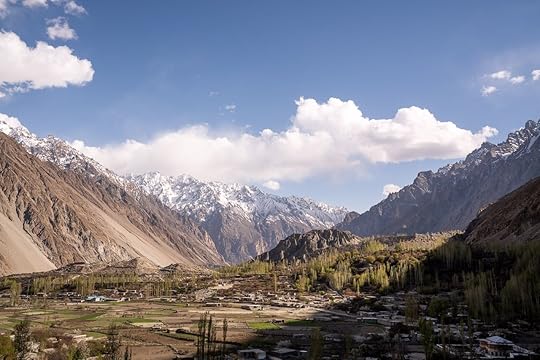
Photo: Samantha Shea
The official length of the KKH stretches from Hasan Abdal, some 30 miles from the Pakistani capital of Islamabad, all the way to Kashgar in Xinjiang, China. The bulk of the highway is paved and generally thought of locally as the nicest highway in Pakistan, though it can still be treacherous during the summer monsoon season. Nearly any type of wheeled vehicle can be seen there, including bicycles.
Even though I spent four months in Pakistan in 2019, I never quite made it to the Karakoram Highway, or KKH, as it’s known. After finally making it back to Pakistan in April 2021, I wasted no time going to the KKH. Spring blossom season was peaking, so I hopped on what would prove to be a more than 20-hour journey to reach the “iconic” portion of the Karakoram Highway — the stretch traversing the mountainous and beautiful region of Gilgit-Baltistan.
It’s in Gilgit-Baltistan’s stunning Hunza Valley that the 800-mile Karakoram Highway offers up some of Pakistan’s most beautiful vistas. There are a few options to get to Gilgit City, where the KKH begins to get exciting. The first is the night bus from Islamabad for just under $20 on the government-owned NATCO bus line. Buses depart from the primary bus terminal, though you should inquire locally for departure times and specifics as they change frequently.
Flights are also available from the Islamabad International Airport for about $95, with daily departures at 6:00 AM and 9:40 AM, and occasional other departure times available. You can also reserve a spot in a private car for close to $30; you’ll need to inquire locally with your lodging provider for specific booking details. Lastly, if you’re comfortable driving on the left side of the road in challenging conditions, you could also drive yourself on the 12-hour journey.
Being a budget backpacker unaccustomed to driving on Pakistani motorways, the bus made the most sense. Yet it wasn’t without its fair share of interesting moments. Landslides, construction, a host of carsick passengers, and the fact that we were traveling at night made the journey less than smooth. But the moment the sun began to rise I found myself surrounded by giant, glorious mountains that erased any memories of the past who-knows-how-many hours. And to think I wasn’t even yet anywhere close to the main attraction.
How to travel along the Karakoram Highway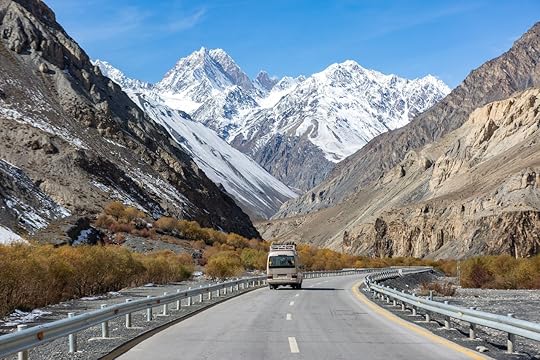
Photo: Pises Tungittipokai/Shutterstock
Traveling by motorcycle is the most picturesque way to explore the KKH. Pick one up at Gilgit Bikers in Gilgit or Karakoram Bikers in Danyor, with options available for guided tours if you have time and prefer a local guide. If you’d rather go at it on your own, allow five to seven days to complete a tour from Gilgit to the Khunjerab Pass and back. Consider starting near Chilas or Gilgit. The portion of the Karakoram beforehand isn’t that exciting, and it’s draining to drive on two wheels.
If you plan on exploring the KKH without your own vehicle, be prepared to hitchhike. Luckily, it’s relatively safe and easy to do along the highway. Private passenger vehicles regularly pick up hitchhikers and drop them farther down the road, and while you should of course use your judgment when hailing and accepting a ride, this can be a great way to pick up local tips on what to see (and what to avoid). Unlike in other regions, buses do not really ply farther than Aliabad, so stock up on supplies there or in Gilgit and have enough for your journey.
While hitchhiking, I routinely encountered people who were happy to drive far beyond where they planned to go to get me to my destination. People living in this region are exceptionally friendly and have grown accustomed to tourists since the highway opened to international travelers in the late 1970s.
You also have the option to pay for a taxi (they exist in all villages and towns) or hire a private driver to take you anywhere you want, whenever you want to go. This will be particularly useful if you’re planning on making your way to the famous Khunjerab border with China and don’t want to hitchhike. Keep in mind that even though Pakistan is usually a very affordable country to travel through, this option will be pricey — plan to pay at least $30 per day or more, particularly if traveling with more than one person.
Where to stop along the Karakoram Highway
Photo: Samantha Shea
You could drive from Gilgit to the Khunjerab Border in one long day, but this is an excursion you should dedicate a few, or many, days to. If you do have more time to spend, don’t feel like you must visit all of the Karakoram Highway’s epic stops in order. After my long bus journey to Gilgit, I then made it to Aliabad, headed to Hunza via a shared van, and from there to the picturesque village of Ghulkin, Gojal, in Upper Hunza. After exploring, I then backtracked and went both farther north and south days, and eventually weeks, later. However you explore them, here are the must-see stops along the KKH.
Fairy Meadows & Nanga Parbat Basecamp — The first must-see is located off of the Raikot Bridge and along one of the world’s most dangerous (unpaved) roads. Fairy Meadows is the most talked-about tourist destination in Pakistan by those actually in the country. While not directly on the highway, but rather just off of it, the meadows can only be reached via a very bumpy Jeep ride, which segues into a two-hour hike. Once you arrive, you’re rewarded with views of Nanga Parbat that seem unreal, as though they’ve been pulled from a science fiction film. If you’re fit and feeling adventurous, you can hike to the Nanga Parbat base camp to really get to see this “killer mountain” up close.
Rakaposhi Basecamp – Another must-see is Rakaposhi, yet another massive mountain that peaks at over 25,000 feet in elevation. Beginning from the village of Minapin, you can hike to its basecamp for some of the most incredible views in Pakistan, looking down from the high alpine to valleys below. From Gilgit, Minapin takes about two hours to reach, and the hike itself is best done as part of a minimum two-night trip. The route up to the basecamp is very steep, and I was glad I broke it up into pieces. The first scenic camping spot is about two to three hours from the starting point, and from there another two-ish hours to the base camp. The best thing about this hike — aside from its legendary views — is that the two camps are manned, and renting a tent and sleeping bag as well as having all your food prepared for you is possible, unlike on some other treks.
Karimabad — This is quite possibly Pakistan’s most charming town. Located above Aliabad and easy to access, Karimabad is postcard-worthy, complete with stone streets, ancient forts, and very good Pakistani food. Essential stops include the Baltit and Altit Forts and the Eagle’s Nest Viewpoint. If you’re feeling up to a steep sunset hike, check out the Queen’s Monument, which is situated high above Baltit; the views of the sun setting over the high country are spectacularly colorful.
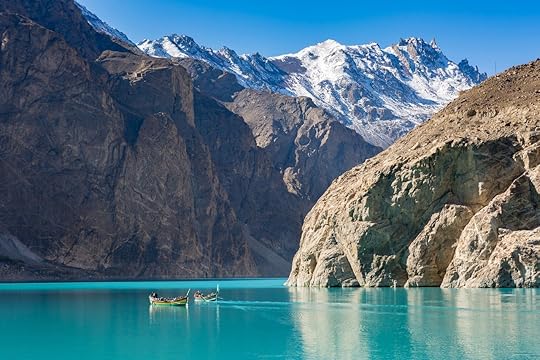
Photo: Pises Tungittipokai/Shutterstock
Attabad Lake — Beauty born out of disaster is the next logical stop on your Karakoram Highway road trip, a place that, no matter how many photos you’ve seen of it, will still leave you awestruck. It’s important to acknowledge, however, that the lake was born of a tragic incident. The bright-blue lake was formed in January 2010 after a massive landslide destroyed two villages and many lives. As the landslide cut off the flow of the Hunza River, the lake that you see today was formed. Numerous hotels and “glamping” sites have popped up around the lake, but I recommend visiting it as just a day stop. If you want to do more than just look at it, water sports such as jet skiing and boating are available for hire.
Gulmit — This medium-sized village in Upper Hunza’s Gojal district is right on the KKH, and it’s worth a stop for two reasons. The first is Ondara Poygah. In 2021, residents of Gulmit undertook a massive feat to construct a stone staircase all the way to the top of Ondara Fort, a historical landmark that’s been in the region for hundreds of years. The view from the top is impressive, to say the least, and makes the climb up the few thousand steps worth the effort. Gulmit is also home to a carpet factory run entirely by women, and tourists are encouraged to visit to learn more about — and support — what they do.
Ghulkin — This village neighboring Gulmit was my home for over a month, captivating me with its numerous hiking trails, headlined by the day hike up to Passu Glacier, and the views they offered. The village is set far above the road and can be reached by a winding drive up from the “Jannat Ghulkin” sign on the KKH.
Hussaini Suspension Bridge — This fear-inducing span across the Hunza River provides amazing views. The bridge was renovated relatively recently but can still induce chills in those afraid of heights. The Passu Bridge is located downriver and can be reached from the road or a one-day trek that goes through a summer settlement.

Photo: Wit.Siri/Shutterstock
Passu — As you progress farther down the KKH, you’ll pass two charming small towns. The first, Passu, is a village known for its massive natural landmark, the Passu Cones, also called the Passu Cathedral. The drive towards them, as they loom ahead of you, is perhaps the highlight of the entire KKH. Passu is also home to one of the best restaurants in Pakistan, the Yak Grill, which serves up various fresh and delicious yak dishes.
Sost — If you plan on making it all the way to the border or beyond, you’re going to have to stop in this second town, Sost. The small market town is the last stop before the border, and while there’s nothing much to do there, you can also get off-the-beaten-path by taking a detour to Chipursan Valley, a remote valley about four hours by Jeep from the bazaar. Tour operators including Hunza Explorers offer Jeep tours in the area.
Khunjerab — A road trip up the Karakoram Highway wouldn’t be complete without a visit to Khunjerab, which refers to both the national park that surrounds the Khunjerab Pass and the famous border at an elevation of over 15,000 feet. The national park is full of opportunities to spot rare wildlife like blue sheep, yaks, marmots, and ibex. You’ll also be able to take as many pictures as you like at the top and say you visited the world’s highest ATM.
Crossing the Khunjerab Border
Photo: mamahoohooba/Shutterstock
If you’re planning on seeing the entirety of the KKH, then you’re going to need a Chinese visa. The border is open for travelers to cross (outside of COVID-19 border closures) on weekdays from April to October. Keep in mind that, unlike when coming from China to Pakistan, you cannot cross on your own and must be accompanied by a Chinese guide until you reach the city of Tashkurgan. The Chinese authorities will also go through each and every single photo on all of your electronic devices, so hide anything inappropriate.
Unfortunately, photography is not allowed from the border until Tashkurgan, despite some seriously camera-worthy views. From there, you can continue on to Kashgar, which officially marks the end of the Karakoram Highway. If you’re crossing into Pakistan from China, you don’t need a guide and can take a bus or even hitchhike to reach the famous crossing. 
The post How to travel on Pakistan’s spectacular Karakoram Highway, the world’s highest road appeared first on Matador Network.
London calling! Get great rates at these luxury hotels in the English capital

A good stay in London includes three things: historical tours, museum visits, a meal that thoroughly disproves the “all they have is fish and chips” theory, and an unforgettable afternoon tea. As travel to the United Kingdom opens and restrictions ease for US travelers, take advantage of these boutique hotel deals in London this summer and fall.
Experience London’s most unique lodging experience at The Good Hotel
Photo: Good Hotel London (Good Hotel London)/Facebook
London may not be the first city that comes to mind when you think of destinations for a floating hotel. But the Good Hotel, moored at Royal Victoria Dock, is exactly that. The four-star property is easily the city’s most unique, combining a hip, Instagrammable ambience and style with a do-gooder’s heart. The hotel employs long-term homeless citizens, so you know your money is going to a good cause. This is the kind of hotel that tempts you to stay, with a lobby fit for lounging over the laptop and rooms that make you feel as though you’ve finally secured that luxury cabin quarters on a river cruise. The on-site restaurant focuses on sustainably sourced vegan and vegetarian cuisine and offers a collection of the city’s best craft beers.
We’d be remiss not to mention that we also love this hotel for its convenience, especially its proximity to the tube and all major attractions. The Mediterranean and Italian-inspired restaurant Zero Sette is adjacent to the dock and worthy of a night out. From the dock you can also head to the riverfront and the acclaimed Windjammer Bar, or stop by the Isle of Dogs on your way into the city center.
Price: From $97
Treat yourself to a piece of telephone history at Brown’s Hotel
Photo: Brown’s Hotel, a Rocco Forte Hotel/Facebook
Hotels often lose out to home rentals in the “feel like you’re a local” category. Brown’s Hotel in Mayfair is the exception. Comprised of a series of townhomes, Brown’s puts you within walking distance of Buckingham Palace and Hyde Park, in an upscale environment that’s as “ Olde London” as it gets. Being a luxury hotel, Brown’s also provides fancy amenities including The Donovan Bar, one of London’s best spots for a Scotch, and top-notch English cuisine at Charlie’s. Don’t miss out on the experience of having an afternoon tea at the hotel. Overall, this is the best hotel in London to treat yourself.
What draws us to Brown’s Hotel, though, is that it’s an unmistakable part of the quintessential London experience. Being so central, you can access everything in the heart of the city, along the Thames, or anywhere accessible via the tube. You can also experience English history at its finest. The hotel was a favorite of Agatha Christie and is the place where Alexander Graham Bell made his first telephone call — in 1877, before having a “phone number” was even a thing.
Price: From $644
Put yourself close to everything at Number Sixteen
Photo: Firmdale Hotels PLC/Facebook
If museums are part of your London itinerary, then the boutique Number Sixteen hotel is a solid lodging choice. Located right in the City Centre neighborhood and walkable to the museums of South Kensington including the Natural History Museum and the Victoria & Albert Museum, Number Sixteen is London’s most conveniently located boutique hotel. Its Victorian charm is the perfect setting for an English breakfast at The Orangery before heading out for a culture-focused outing.

Photo: Firmdale Hotels
We love the hotel’s entire facade. It uses discerning shades of blues, yellows, and pinks to distinguish each room from another. The rooms are cozy and quiet, but retain the historic charm that makes central London one of the world’s most popular tourist destinations. And the afternoon tea is absolutely to die for.
Price: From $232 
The post London calling! Get great rates at these luxury hotels in the English capital appeared first on Matador Network.
Essential tips for traveling with friends in a different tax bracket

Few things are more awkward than talking about money with friends who make significantly more or less than you. In everyday life, it’s a pretty easy situation to avoid: Just don’t talk about it. Traveling, however, thrusts money issues and income disparities into the open.
Money is a factor in every aspect of travel, from picking a destination to deciding on activities, where to eat, and where to stay. When one traveler wants something extravagant and the other wants to ball on a budget, things can get contentious. Here are simple tips on how to get through the trip without ruining the entire thing.
1. Don’t let them payOffering to pay for a meal might sound like a good idea if you make significantly more money than your friend. It’s generous, reduces the hassle of splitting a bill, and might appear to exhibit a degree of sensitivity. Well, don’t. Picking up the check is fine if you’re hosting a guest or taking an employee out for drinks. But on a vacation where everyone is supposed to be equal, picking up the check introduces a power dynamic, despite your honorable intentions.
You might say, “Don’t worry about it man, I’ll grab this one.” But what the budget traveler hears is, “I know you can’t afford this, man, and compared to you I’m basically rolling in money. So put that wallet away, you charity case, and let me handle it.”
Yes, you’ve been generous, but the line between generosity and pity is extremely fine. Your friend might accept your gesture, and even genuinely appreciate it, but they’ll also feel a pang of smallness that will persist — or grow into bitterness — throughout the trip.
By the same virtue, if your friend keeps trying to treat you to every meal, or constantly pick up the tab, don’t let them. It might sound harmless at first, but you’ll quickly start to feel indebted and even resentful. A successful vacation is rooted in equality. Nothing erodes that equality faster than one person paying for the other.
The exception to this rule is if one traveler offers to foot the bill for an experience both can enjoy, but which they would otherwise have to skip altogether due to cost. This could be dinner at a fancy restaurant, or a pricey excursion like swimming with dolphins. If the richer friend doesn’t mind spending the money to do the activity, you shouldn’t feel uncomfortable offering to pay as long as the other person understands it’s worth the double cost.
2. Balance the budgetPresumably, you’ll already have a rough idea of what your trip will look like before you depart. That means zeroing in on what things you want to reserve before going and which you want to book once you’ve arrived. Whether it’s a hot-air balloon ride, a safari, paddle boarding, snowmobiling, zip lining, or tickets to a bar crawl, excursions are the meat of your vacation. It’s also one of the most common parts of a trip where money issues come into play.
While your friend might have no qualms about dropping $100 to go zip lining during that hour of free time in Costa Rica, the budget traveler might prefer a short (and free) hike. While your friend might want to spend $40 on a bar crawl, and the built-in social circle that comes with it, maybe you’d rather hit the bars on your own and try your luck meeting people in the wild. Compromise is important.
A budget traveler should keep their funds in mind without descending into inflexibility (you’re on vacation, after all), while the more extravagant traveler should feel free to suggest and advocate for their preferred activities while remaining open to adjusting. Skimping on everything and eating McDonald’s for every meal is no way to have a fun trip, but blowing all your money on extravagences and pressuring your friend to do the same is also inadvisable. As with any relationship, each must understand the other’s situation.
3. Don’t be afraid to part ways“Parting ways” doesn’t literally mean saying farewell to your friend mid-trip and having totally separate vacations, but it does mean diverging for a few hours to pursue separate interests or experiences. If you can’t agree on whether it’s worth it to enter an expensive museum, for example, feel free to go your separate ways for a few hours.
It’s healthy to carve out some alone time on a trip even when traveling with a partner or best friend. There’s no contract that says you have to spend all your time together. Agreeing on every single aspect of your trip would be great, but it’s unrealistic, especially when money comes into play. Rather than force a bitter compromise neither of you are happy with, just take a break from each other, spend some time on your own, and reconvene without resentment a few hours later. 
The post Essential tips for traveling with friends in a different tax bracket appeared first on Matador Network.
July 15, 2021
You can stay in NBA legend Scottie Pippen’s Chicago home and watch the Summer Games from his pool

Even if you’re not a basketball superstar, Airbnb and Scottie Pippen are giving you the opportunity to live like one for the upcoming Tokyo Olympics. Pippen, a two-time Olympic gold medalist and six-time NBA champion, is offering three one-night stays in his giant mansion in Chicago. The home has a full-sized basketball court, movie theater, and a game room with a classic Pac-Man game console.
To celebrate the year he and his team won his first Olympic gold medal in 1992, the coveted opportunity will be priced at only $92 per night. Guests will be able to take in all of Pippen’s memorabilia after being virtually greeted by the legend himself. Then get ready to play on his indoor court before watching the basketball Olympics competitions in the eight-seater movie theater, or while floating in the pool that is fitted complete with an outdoor flat screen.
Last September, Pippen gave Architectural Digest a tour of his house, so you can see just about every nook and cranny before you try to stay the night.
“Being able to represent the United States as an Olympian twice was an incredible honor as an athlete,” said Pippen in a news release. “Playing alongside the best of the best with Team USA will always be a career highlight for me, and I’m excited to host basketball fans at my home to witness the next generation of athletes performing at the top of their sport.“
Booking opens July 22 at 10:00 AM PT. Stays will be offered on August 2, 4, and 6. 
The post You can stay in NBA legend Scottie Pippen’s Chicago home and watch the Summer Games from his pool appeared first on Matador Network.
10 New Orleans Airbnbs near the French Quarter for bachelorette parties and reunions

We hope you love the spaces and stays we recommend! Just so you know, Matador may collect a small commission from the links on this page if you decide to book a stay. Listed prices are accurate as of the time of publication.
Most visitors to New Orleans want to stay in the downtown and French Quarter areas and the surrounding neighborhoods. Fortunately, these parts of the city are loaded with great Airbnbs, within walking distance of the action on Bourbon Street. Here are the 10 best New Orleans Airbnbs to put you close to all the fun the city has to offer.
1. Renovated Mid-City apartment walking distance to jazz clubs
Photo: Airbnb
This newly renovated Mid-City apartment is located on the second floor with a private entrance. It’s flooded with tons of natural light, and it comes complete with a full kitchen, so in case you choose not to indulge in New Orleans cuisine, you can cook for yourself. It’s ideal for a tight-knit group of a few close friends.
Four guests, two bedrooms
Price: $120 per night

Photo: Airbnb
This remodeled home is large and perfect for bachelorette parties and other group getaways to New Orleans. Staying in a historic property in a historic city adds to the charm, and you’ll be just northeast of the French Quarter — a beautiful three-block walk. Dining, cafes, and still-operating bakeries are also within walking distance.
Eight guests, four bedrooms
Price: $598 per night

Photo: Airbnb
No place is more epic for a New Orleans bachelor or bachelorette party, or a large reunion of any kind, than a mansion. The Robertson Mansion is 10 short blocks from Bourbon Street and the perfect place to chill before and after visiting the French Quarter. It’s strikingly NOLA with a wraparound porch, a large kitchen that has undoubtedly played host to some fantastic meals over the years, and walking distance to everything.
FIfteen guests, seven bedrooms
Price: $874 per night

Photo: Airbnb
Enjoy your stay in a traditional New Orleans shotgun-style home in the Marigny right outside the French Quarter. The artfully designed space with its art and bright colors is an instant mood booster. It was honored at the AIA New Orleans Design Awards for its mix of old and new construction. It also includes a saltwater pool and deck garden. The pool is heated, so it can be used all year round.
Three guests, one bedroom
Price: $135 per night

Photo: Airbnb
Make this French Quarter Airbnb your home away from home in New Orleans. It’s only a few hundred feet from Bourbon Street and within walking distance to anywhere in the French Quarter. You can get a view of downtown, and you are a quick walk to the St. Louis Cathedral, all while still enjoying privacy and seclusion. The space also includes a large balcony overlooking the Quarter.
Four guests, two bedrooms
Price $327 per night

Photo: Airbnb
The best New Orleans Airbnbs incorporate water, a historic property, and walkability to deliver a great experience. Located in the Irish Channel neighborhood, this two-story home is excellent for a group trip. It has four bedrooms, three full baths, and an outdoor patio area. It was built in 1900 but has modern amenities, including smart TV, cable, and Wi-Fi. Beer lovers will appreciate its proximity to “Brewer’s Alley” — the nearby breweries and distilleries including Urban South, Port Orleans, NOLA Distillery, and more.
Eight guests, four bedrooms
Price: $639 per night

Photo: Airbnb
Stay right in the center of New Orleans at this downtown condo. Whether you’re a solo traveler or working from home, this one-bedroom is perfectly convenient. It’s ideal if you’re in town for a special event because it’s located within walking distance of the Superdome, Smoothie King Center, and Harrah’s Casino.
Two guests, one bedroom
Price: $79 per night

Photo: Airbnb
Many travel to New Orleans Airbnbs for bohemian endeavors. No spot is more conducive to this than this large, spacious apartment just two blocks off Bourbon Street and right near Canal Street. Enjoy the hammock swing and be prepared for a bright and dazzling interior — nearly as lively as the action of the French Quarter itself.
Twelve guests, two bedrooms
Price: $284 per night

Photo: Airbnb
This beautiful Victorian-era first-floor flat features original wood floors, high ceilings, and large windows. It’s located in a very walkable area just steps away from MoJo Coffee and less than a mile from the Warehouse District. It can sleep four guests between the queen size bedroom and the Memory Foam sleeper sofa.
Four guests, one bedroom
Price: $129 per night

Photo: Airbnb
This new renovation located in the heart of Marigny recently won the Louisiana Landmarks Society Award for Excellence in Historic Preservation. The two-bedroom features a large balcony overlooking Washington Square Park. The ideal location is just a four-block scenic walk to the French Quarter. 
Four guests, two bedrooms
Price: $307 per night
The post 10 New Orleans Airbnbs near the French Quarter for bachelorette parties and reunions appeared first on Matador Network.
A whisky brand is giving away a luxury 5-day Tokyo trip for two highball lovers
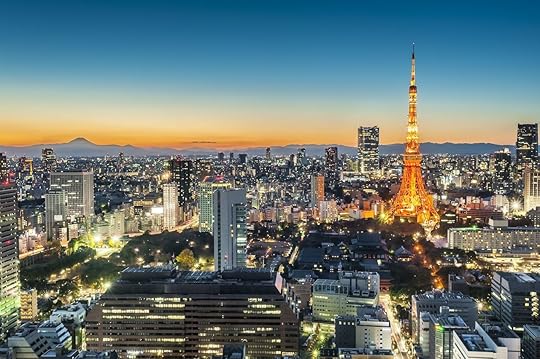
The 2020 Summer Olympics has been put back on the calendar for 2021, but travel to see the city and games in person has not. Yet while the games will come and go, the beauty and joy of experiencing Tokyo will be there for us next year.
The House of Suntory, which makes beloved whiskies like Hibiki and Yamazaki, is helping two people experience the grand side of Tokyo in 2022 by giving away a five day, four night stay at a luxury resort along with a round-trip flight, ground transportation when they get there, and a distillery tour or “Suntory Time” whisky experience. There’s also a stipend of $2,500 included to bring the total estimated value of the trip to $30,000. It’s like the best parts of Lost in Translation (the whisky and fancy digs) without the midlife crisis (probably).
Anyone who is 21 or older, lives in the US, and enjoys a good whisky highball can win the trip. To throw your name into the hat, you first need to make a whisky highball with one part Toki Japanese whisky and three parts soda water. Then simply follow @SuntoryToki on Instagram and post a picture of your highball, tagging the brand and including a creative 300-character-max caption that includes both #SuntoryTime and #TokyoContest. Being a superfan of Japanese whisky and the perfected Japanese whisky highball isn’t a requirement, but it’d be hard not to enjoy them both when touring the best of Tokyo.

Photo: House of Suntory
The full rules can be found on Suntory’s website.
You have until August 14 to post your photo and cross your fingers you’re a grand prize winner. Another 50 people will receive a complete Suntory Time Highball kit for future drinking. For the rest of us, a quick stop at the liquor store for a bottle of Japanese whisky, soda water, and some fancy ice will have to do.
The post A whisky brand is giving away a luxury 5-day Tokyo trip for two highball lovers appeared first on Matador Network.
Finding love on a plane: Impossible, or a great opportunity?

Finding your seat on an airplane is like the first day of class. You could by some miracle end up sitting next to the love of your life who you just haven’t met yet, or it could be that person who breathes too loud and never stops talking. In movies like Can You Keep a Secret?, romance that starts on a plane seems all too possible. Reality can be a little different.
Two well-traveled Matador staffers try to get to the bottom of it: Is finding love on a plane reality or fantasy? Eben Diskin, senior staff writer, thinks the idea of meeting people on planes is nothing more than a Hollywood fantasy, while deputy editor Morgane Croissant is more optimistic.
It’s a fantasy because: Hollywood isn’t realityLet’s get something straight: I love romantic comedies. There’s the formulaic plot that never lets you down, the improbable but not-quite-impossible meet-cute moments, and the hilarious best friend who always seems to disappear halfway through the movie. Love it all. Problem is, these flicks plant a false seed of hope in our brains.
Am I ever gonna shack up with a girl with short-term memory loss and take valuable time out of my busy schedule to remind her each day why she fell in love with me? Certainly not. But might I meet a woman with Drew Barrymore’s girl-next-door charm at a breakfast diner in Hawaii? Sure. Maybe. But that couldn’t happen on a plane.
I took my first flight when I was 17. What I knew to expect came from the movies: I’d settle into my window seat, a Victoria’s Secret model would park herself next to me, and we’d subtly fight over the armrest. I’d ask for her number, and she’d say something like “if it’s meant to be, we’ll find each other in Philadelphia” (our destination). After landing, I’d wander into a cozy independent bookstore and realize she was reaching for the same book from the opposite side of the bookcase. The rest, as they say in Hollywood, would be history.
Instead I found myself next to a 50-year-old man wearing a StarCraft shirt who snored while he was awake. Nothing against StarCraft guy — who was fascinating in his own right, I’m sure — but he’s not exactly the stuff Hollywood romance is made of. —ED
It’s a reality because: Meeting people on airplanes is as easy as anywhere else
Photo: Syda Productions/Shutterstock
Rom-com meet-cutes are hardly based in reality. Nobody falls in love with their wedding planner (like in The Wedding Planner) or with the hot brother of the person you’re swapping houses with over Christmas (The Holiday). And it’s not likely that someone will spill all of their secrets to their plane seatmate because they think they’re going to crash (Can You Keep a Secret?).
Yet Hollywood aside, airplanes are as good a place as any to meet someone. You’re seated beside a potential lover in an enclosed place that creates a sort of forced intimacy. There’s food and drinks to keep you satiated. And just the fact that you’re traveling is great fuel for an interesting and revealing chat. Being on a flight is certainly more favorable to start a lovely relationship than being at a meat market on a Saturday night.
I met my partner of 12 years on a ferry sailing between Ireland and France. Our environment, as well as our travel plans and our previous trips, were our main topics of conversation. Spending 19 hours on a boat with very little else to do than sharing and connecting is what allowed us to develop a liking for each other, and it can easily be replicated on a metal tube 30,000 feet up in the sky. —MC
It’s a fantasy because: The motivation just isn’t thereMy seatmates have all been relatively uniform whether I’m taking a domestic or international flight. The same goes for trains and busses. They’re usually perfectly pleasant folks who make a bit of small talk before settling into the digital ether for the next three hours. It’s made me realize that most people don’t really want to meet people on planes. They just want to get through the travel experience with as little frustration as possible.
Traveling can be a chore with the security lines, crowds, delays, and other minor inconveniences that compound to put you in a bad mood. Finding peace by shutting everything out in the airport isn’t anti-social, it’s a self-preservation technique. But that same self preservation also means closing yourself off to potentially rewarding social interactions.
Call it a glass-half-empty take, but in an environment where everyone is exhausted, frustrated, and impatient, socializing with a stranger is often just too much work. —ED
It’s a reality because: You’re not at your best in an airplane, and that’s a good thingNobody looks good while flying. Travelers don’t bother putting on a full face of make-up for a 10-hour transatlantic flight, nor do they wear their fancy evening gowns. We’re all in our sweatpants with our hair tied back, trying to be as comfortable as possible. Taking a long flight in coach is the great equalizer and the great revealer. And what better times than when we’re at our most genuine to meet someone? There’s no smokescreen and games, you can be yourself and meet someone who is too, and you can easily connect through the shared ordeal of not having enough money for a business class seat. —MC
It’s a fantasy because: What are the odds?
Photo: NadezhDA222/Shutterstock
My string of lackluster experiences got me thinking: what are my odds, anyway? I could strike up a conversation with pretty much anyone sitting next to me on a plane, especially since they’re a captive audience. But what’s the chance that it’s someone I connect with and then stay in touch with? This could be a romantic or platonic connection, but for the purpose of argument — and to follow the Hollywood cliche — let’s talk romance (at least romance from my perspective as a single, heterosexual man).
Some back of the napkin math using demographic data from Statista:
The data site states there are about 136 million women in the US of marital age, roughly half of whom are already married (and that doesn’t count the ones in committed partnerships). Of the remaining, say 20 percent are a potential match in age and personality. Then you have to narrow down by people who would agree there’s a connection. We could keep going, but let’s leave it there and call it 3 million chances to fall in love with someone in the US for my particular interests.
Three million may sound like a lot, but one of those people also has to be on the same flight as you on the same day and time. They also have to be sitting next to you. The odds are, frankly, not great.
This isn’t meant to depress you, just help you adjust your expectations. I’ll crossing my fingers that I’ll actually meet someone on a plane, but it seems more unlikely than a Tom Hanks and Meg Ryan movie ending in a murder-suicide. —ED
It’s a reality because: Only people open to connecting will do soMost travelers see flights as a way to get from point A to point B and refuse to see it as an opportunity for connection, even on a long trip. Some go as far as comparing a chatty seatmate to a screaming infant — they are supposedly just as annoying. At Matador Network, we like to say that “travel is people,” meaning that what makes travel so great are the individuals we meet along the way, and it starts in the airplane.
Not engaging with the person beside whom you’re going to be seating for the next few hours is a waste of a good opportunity. Don’t spend your entire flight hours sleeping or watching corny movies on a tiny screen, and instead talk with your neighbor. After all, that person is going to the same place as you — aren’t you interested about what they’re going to be doing there? And who knows, they may turn out to be a lover, friend, or they’ll remain that cool, bizarre, fun person you met on a plane. You’ll never until you open up to them. —MC 
The post Finding love on a plane: Impossible, or a great opportunity? appeared first on Matador Network.
How to make the most of your one day at Amsterdam’s Rijksmuseum
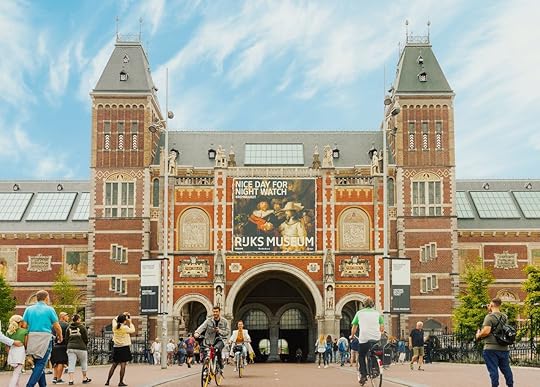
If you could camp out in the Rijksmuseum, it would be easy to spend an entire week in Amsterdam without stepping foot outside its hallowed halls. A living monument to the art and history of the Netherlands, the Dutch national museum reportedly houses more than a million artworks and artifacts from the Middle Ages to today. Chief among the collection’s masterpieces are paintings by Dutch Golden Age icons such as Rembrandt and Vermeer.
A week is a lot of time to dedicate to a single attraction, however. That’s why we’ve enlisted the advice of the museum’s head of Asian Art, Menno Fitski, to help travelers make the most of a one-day visit at the Rijksmuseum.
A graduate of Leiden University in the Netherlands, where he studied Japanese Language and Culture, Fitski earned his current title after serving as the museum’s East Asian curator for more than 20 years. Heed his tips and tricks for the ultimate one-day guide to the Rijksmuseum.
Before you go: the #1 piece of advice for visiting the RijksmuseumThe best times to visitGuided toursWhere to start your visitFive must-see pieces or collections and why they matterUnderrated collections to check outWhat you didn’t knowBefore you go: the #1 piece of advice for visiting the Rijksmuseum
Photo: Erik Smits/ Rijksmuseum
Fitski’s number one piece of advice for visiting the Rijksmuseum is to set an early alarm and beeline for the Gallery of Honour. The museum’s most famous painting, “The Night Watch” by Rembrandt van Rijn, is framed by an arched entryway at the far end of the hall. Yet the entire corridor leading to the Night Watch Gallery is a study in the Dutch Golden Age, featuring masterworks by the most impressive painters of the 17th century. Even the hall itself is a work of art, with a tall domed ceiling and beautifully muraled walls, cast-iron beams showcasing inscriptions for the featured artists, and various coats of arms from across the Netherlands.
Because the Gallery of Honour is the most popular wing in the Rijksmuseum, it’s best to get there right when the museum opens. Not only will this help make your visit as efficient as possible, but it also creates an opportunity to spend some quality time with the Dutch greats, awed by every alcove lining the long corridor and each brushstroke adorning the walls. Says Fitski, “It’s quite special to roam around the Dutch masterpieces with only a few [others].”
The best times to visit
Photo: Rijksmuseum/Facebook
Unlike the Louvre, the Rijksmuseum is rarely inundated with crowds that make navigating the museum a challenge. Not even “The Night Watch” draws an unmanageable queue like you’d expect to see in front of the “Mona Lisa.” Nonetheless, the museum is a major attraction in one of Europe’s most heavily touristed capitals, and you’ll want to plan your visit accordingly.
The busiest time to visit is around noon. For this reason, Fitski recommends saving the lesser trafficked areas, such as the Asian Pavilion and Special Collections, which displays artifacts ranging from garments and armor to instruments and model ships, for midday and touring more popular galleries in the early morning and late afternoon, from around 3:00 PM until closing.
The Rijksmuseum is open daily from 9:00 AM to 5:00 PM, even on holidays. For an extra special experience, Fitski suggests planning a family outing on Christmas Day. Not only is the museum likely to be emptier then, but that’s also “such a good way to make memories,” he notes.
Guided toursVisitors can organize tours of the Rijksmuseum two ways: bring their own guide or book one through the museum. Groups of up to 10 people are welcome to come with an expert in tow if said expert registers as an external guide in advance. Those who request a Rijksmuseum guide can choose between various tours, some of which may be themed, such as the current “Pink History” tour that reflects on the history of homosexuality in the Netherlands and its influence on Dutch art through the ages. Most tours are available in either Dutch or English, and the museum also offers guided tours tailored to the visual and hearing impaired.
Where to start your visit
Photo: Erik Smits/Rijksmuseum
Following Fitski’s advice to begin your visit in the Gallery of Honour and Night Watch Gallery will position you smack in the center of the second floor, which is bookended by the Great Hall and Sculpture Gallery. From there, you can move either clockwise or counterclockwise through the rest of the floor, which features everything from William of Orange Mannerism and William III Delftware to Flemish Influences and French Court Art.
Where you go next depends on your interests and timing. Pop up to the third floor if you’re waiting for a growing crowd to die down. There, you’ll find all things modern, from the works of Karel Appel and fashions of Yves Saint Laurent to the furniture of Gerrit Rietveld and a fighter plane from WWI. Alternately, continue your tour of the classics by working your way down to the first floor, where you’ll find artworks from 1700 to 1900 by famous artists such as Van Gogh and Goya, then end the day touring the Special Collections and Asian Pavilion on the ground floor.

Photo: Erik Smits/Rijksmuseum
To help make your visit as efficient as possible, Fitski also suggests starting your tour outside of the museum altogether: at home. Using the Rijksmuseum app, visitors can create custom routes based on their interests, from paintings of flowers and food to real-life furniture. Several self-guided tours are already pre-planned for visitors on the app, as well, whether you prefer fun themed routes like portraits and selfies or want a headier, more educational experience exploring topics such as the Rijksmuseum and Slavery from 1500 to 1650 or 1650 to 1960.
Five must-see pieces and why they matter1. “The Night Watch” by Rembrant van Rijn
Photo: Erik Smits/Rijksmuseum
By now it’s pretty clear that you can’t visit the Rijksmuseum without seeing Rembrandt’s most famous work. Officially titled “Militia Company of District II under the Command of Captain Frans Bannick Cocq,” “The Night Watch” depicts Amsterdam’s civic guard taking marching orders from their captain, capturing a group portrait where the subjects are in action. Its significance is threefold: The painting introduced movement to portraiture, it’s massive at roughly 12.5 feet by 15 feet, and it showcases a technique called tenebrism, or dramatic illumination, which emphasizes the contrast between light and dark. In fact, the heavy shading is how the painting came to be known as “The Night Watch” despite being staged in the daytime.
2. “The Milkmaid” by Johannes Vermeer
Photo: Erik Smits/Rijksmuseum
Johannes Vermeer is another 17th-century Dutch Golden Age painter whose art has garnered worldwide acclaim. “The Milkmaid” is among his most famous paintings, arguably second only to “Girl with a Pearl Earring.” Like many Vermeer works, “The Milkmaid” elegantly captures the simplicity of everyday life, yet this painting notably depicts a working-class woman in contrast to the more affluent subjects Vermeer often painted. Light plays an important role here as well: Aside from a small stream of milk being poured by the milkmaid, the painting is a still life that relies on the perception of sunlight streaming in through the window for extra depth.
Fitski admires the level of detail and texture on display here, from the bread and ceramic on the table to the milkmaid’s clothes and skin, and notes that there are only 34 known Vermeer paintings left in the world. Of those, the Rijksmuseum’s collection contains no fewer than four, which visitors would be remiss to skip on their museum tours.
3. Japanese temple guardians
Photo: Erik Smits/Rijksmuseum
Of all the works in the Asian Pavilion, Fitski nominated this pair of Japanese temple guardian sculptures as a must-see. “If you think all Japanese art is zen,” says Fitski, “think again.”
Carved from wood, the sculptures were originally created between 1300 and 1400 to stand on either side of a temple entrance and scare off evil spirits. Their size alone is impressive, measuring nearly eight feet tall and roughly four feet wide. In each guardian’s hand is a vajra, or ritual weapon, to symbolically fight ignorance, while their open and shut mouths symbolize knowledge in its entirety by depicting the first and last syllables of the Sanskrit script Siddham. According to the Rijksmuseum, any temple-goer who passed between these guardian sculptures was said to be able to acquire this wisdom.
4. Doll’s house of Petronella Oortman
Photo: Rijksmuseum/Facebook
This dollhouse gives museum-goers a different perspective on the Dutch Golden Age: It captures the lifestyle of the 17th-century Dutch elite not on canvas but in miniature.
This dollhouse is no children’s toy. In fact, the dollhouses of the day weren’t designed for children at all. They were collectibles for wealthy Dutch women, in this case Petronella Oortman. What makes Oortman’s dollhouse so remarkable is its authenticity. Everything was made to scale using the same materials that would have been found in an actual luxury home. The porcelain was sourced from China, craftsmen like glassblowers and silversmiths were hired to furnish the dollhouse, and the frescoes adorning the walls could pass for artworks that would hang in the Rijksmuseum. Even the tortoiseshell cabinet in which the dollhouse sits was painstakingly inlaid with beautiful pewter.
All that work no doubt came with a hefty price tag: According to Fitski, Oortman’s dollhouse is believed to have cost more than an actual luxury Amsterdam canal house.
5. The Rijksmuseum Research Library
Photo: Piith Hant/Shutterstock
Not just the Dutch national museum, the Rijksmuseum is also a research institute that contains the largest collection of art history books in the Netherlands, in addition to being one of the most significant art libraries in the world, with a catalog of approximately 450,000 volumes. European art history is the focal point of the library collection. Mirroring the museum’s collections, the library offers insight into the art of the Netherlands and Western Europe from the Middle Ages to the 20th century, as well as a variety of works on the history of pan-Asian art. The best part for library lovers? The collection is housed in a beautiful, 19th-century reading room where you could easily spend as much time as you did wandering the museum itself.
Underrated collections to check out
Photo: Rijksmuseum
Museum-goers generally plan their visits around masterworks created by icons of the art world. The Rijksmuseum is no exception, yet some of the most fascinating pieces on display were neither crafted by famous hands nor are even considered art; they’re everyday objects that offer insight into Dutch culture and aesthetics in their humblest form.
Though the Special Collections gallery houses the majority of the museum’s miscellaneous artifacts, for Fitski, the museum’s woolen hat collection on the second floor exemplifies the beauty that can be found in the simplicity of historical relics. The collection is made up of centuries-old, individually designed headwear that was once worn by whalers who worked on Spitsbergen, an island located near the North Pole. According to Fitski, the hats may have been hand-crafted by the sailors’ loved ones. “When you see that they are carefully mended,” Fitski says, “you suddenly feel very close to their personal lives of 400 years ago.”
What you didn’t knowThe Rijksmuseum is full of surprises. And they’re not limited to the museum’s collections. Alongside priceless works of art, the Rijksmuseum is home to two peregrine falcons, which have a nest in the museum’s bell tower and recently had two new chicks. “If you look up to the sky, you might see them flying around,” says Fitski.
Where the artwork is concerned, Fitski also notes that the Rijksmuseum Gardens puts on a free exhibit every summer that’s worth taking advantage of. This year, the exhibition focuses on the works of Ellsworth Kelly (1923-2015), an American painter, printmaker, and sculptor who was known for his use of bright colors, linework, minimalism, and hard-edge painting.

Photo: RIJKS/Facebook
When your one-day visit of the Rijksmuseum comes to a close, the museum has one more trick up its sleeve: an on-site restaurant with a Michelin star. The restaurant, Rijks, which is located in the Philips Wing on the ground floor, showcases creativity of a different kind through artfully prepared and plated dishes that combine locally grown produce with international influences that have helped shape Dutch cuisine. 
The post How to make the most of your one day at Amsterdam’s Rijksmuseum appeared first on Matador Network.
July 14, 2021
Italy finally bans all cruise ships in Venice, for real this time
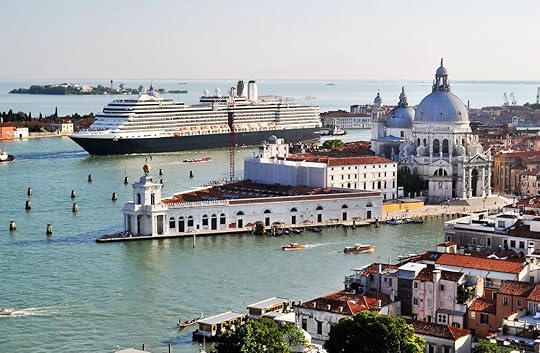
The “Venice bans cruise ships” headline might be one you’ve seen before. Venice already announced a ban on cruise ships from entering Venice’s historic center last April, as we reported.
However, that wasn’t the whole story. That became clear last month when, to the shock of many, massive cruise ships returned to Venice. As Matador then explained, the wording of the original ban said it would take effect only when an alternative docking area for the cruise ships was presented. Since no alternative currently exists, the ships were still permitted to enter the Venetian Lagoon — an already threatened and fragile ecosystem.
Two weeks after the mega cruisers returned to Venice, UNESCO shook things up. The UN agency on cultural heritage said it would put the Venice Lagoon on the endangered list if cruise ships weren’t banned — finally spurring the Italian government into action.
As of August 1, all ships weighing over 25,000 tons will be prohibited from entering the shallow Giudecca Canal that flows past Piazza San Marco. Only small passenger ferries and goods vessels will be allowed to use the canal.
The banning of cruise ships in Venice has always been a controversial issue. Residents have long advocated for the government to ban large ships from the lagoon, due to their pollution, ill effects on the ecosystem, and even accidents that have injured tourists. Tourist operators, local businesses, and the roughly 6000 port workers and their families, profit from the influx of tourists and have argued in favor of the cruise industry.
Whatever your stance on the issue, the ban proves that persistent environmental advocacy and protests can meaningfully impact policy. 
The post Italy finally bans all cruise ships in Venice, for real this time appeared first on Matador Network.
Tahoe ski patroller reveals all the things dropped off ski lifts last season

When Brian Fidelibus is on ski patrol during the winter in Tahoe, his job is to keep everyone safe on the track by promoting the track rules, assisting with medical injuries, and keeping skiers in bounds. He also spends lots of time around the ski lift, often finding some of the crazy things that fall out of the pockets of skiers and snowboarders while they make their way up the mountain.
Fidelibus has taken to TikTok to show some of the things he’s found in highlight reels he calls liftloot. In it, you’ll see he’s found Airpods (lots of them), some Airpod cases, vapes, pocket knives, medicine, and more bizarre stuff. In other videos, he’s found cell phones, fancy watches, and unopened alcohol.
@tahoepatrolWe have found some crazy stuff #skipatrol #laketahoe #skiresort #liftloot
♬ SUNNY DAY – Matteo Rossanese
In the summer, once the snow has melted, the treasure hunting continues and he finds old ski passes, drinks, and odd items like kitchen spatulas, that he picks up digently.
@tahoepatrolLift Loot Pt 11! ##laketahoe ##skiresort ##skipatrol ##woodwardtahoe
♬ Blue Blood – Heinz Kiessling & Various Artists
Moral of the Tiktok: Next time you’re heading up to the slopes, be sure to hold your valuables tight and zip up all your pockets. You don’t want to lose your stuff or pollute on the mountain top.
The post Tahoe ski patroller reveals all the things dropped off ski lifts last season appeared first on Matador Network.
Matador Network's Blog
- Matador Network's profile
- 6 followers



